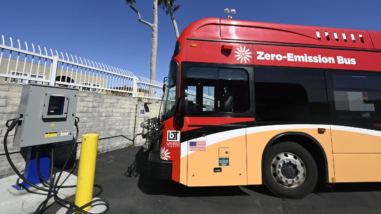The purpose of this Request for Proposal (RFP) is to generate ideas and initiate a new set of grantmaking in support of climate finance: sustainable retail banking. While the Hewlett Foundation has previously supported a number of initiatives to mobilize capital towards solving climate change, such as the establishment of green banks, the issuance of green bonds, the deployment of patient first-loss capital to clean energy funds, and the Taskforce on Climate-Related Financial Disclosures (TCFD), we seek to expand the levers by which we can do so.
One such lever lies in mobilizing the deposits of both business and consumer savers through the retail banking sector. Estimates vary, but a significant amount of capital resides in the checking and savings accounts of consumers, for example $12 trillion in the United States and $1 trillion in India. If $1 trillion is needed globally and annually to meet the Paris Climate Accord by 2050, then the retail banking sector may provide part of the capital needed.
For the purposes of this RFP, the Hewlett Foundation defines retail banking broadly. While retail can sometimes be limited to individuals, we use the word retail to mean consumer-facing; these consumers can be both individuals and organizations (institutions, businesses, etc.). While retail banking generally connotes certain types of transactions such as checking and savings, we include any type of investment instrument in which the consumer can have direct input. Examples of retail banking solutions that mobilize capital to solve climate change include innovations through financial technology (e.g., Aspiration Bank in the U.S. offers virtual, online, climate friendly interest checking; PensionBee in the U.K. offers virtual, online climate friendly pension options) and innovations that serve as proof points to existing financial structures (e.g. the Clean Energy Credit Union in the U.S. and green tagging in financing real estate).
Organizations across the retail banking sector are invited to apply and articulate how they can drive investments into climate change solutions. Both supply-side and demand-side initiatives are welcome. Supply-side initiatives may include encouraging retail banks to provide 100% sustainable banking (divestment from fossil fuels and investment in climate change mitigation solutions such as solar and wind energy), de-risking the ability for retail banks to provide climate finance, scaling the size and number of sustainable retail banks, and improving the capacity for sustainable banks to reach a larger number of consumers. Demand-side initiatives may include increasing the awareness of sustainable retail banking options among business and household consumers, facilitating the switch to climate-friendly options through financial technology, and effective communication that leads to a shift in consumer action.
As a result of this process, we aim to:
- Promote a sustainable retail banking movement that drives real capital into solving climate change;
- Encourage catalytic investment in climate change solutions through the retail banking sector;
- Avoid funding duplicative efforts.
###
- Environment Program Request for Proposal information and application instructions
- Preliminary form for single organization applicant
- Preliminary form for multi-organization applicant




